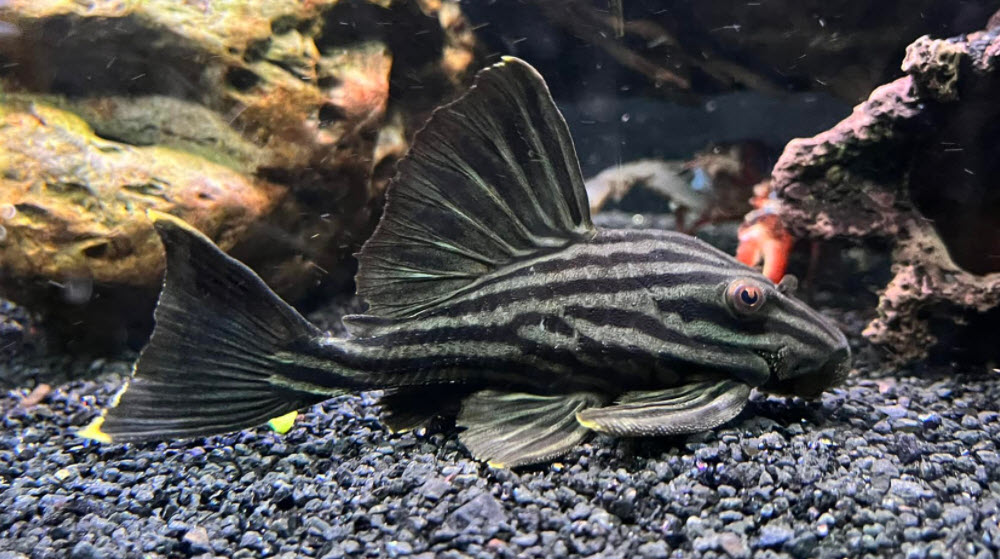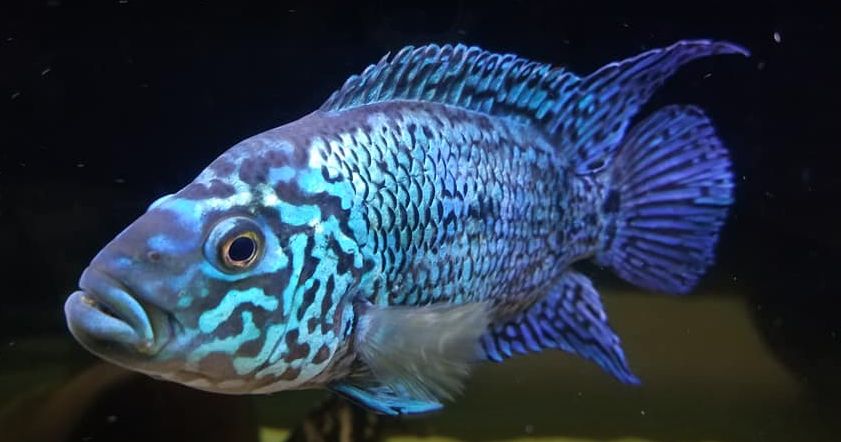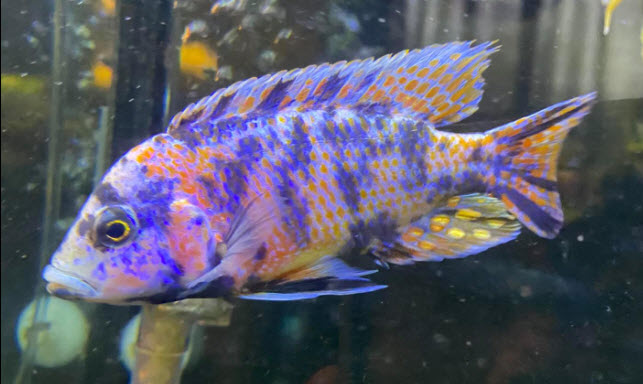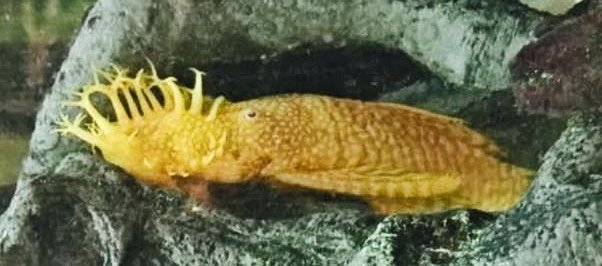
When an aquarium has had a virulent organism such as the bacteria columnaris wipe out most of the aquarium many people try to sterilize the aquarium and its contents. Some people use disinfectants such as ¼ cup of bleach in a gallon of water to wipe down and “disinfect” an aquarium which has had an outbreak which has killed the fish (generally bacterial but also many other pathogens).
Others go so far as to use a commercial sterilant such as Virkon. Or they use vinegar, potassium permanganate, hydrogen peroxide or alcohol. They wipe the aquarium with the disinfectant, then let it dry.

Intuitively this sounds like a good idea. But this “sterilization” simply doesn’t work for several reasons:
- Most pathogens of fish are found on or in the majority of fish and plants and only break out when the fish’s health declines. And you cannot sterilize a fish or a plant.
- “Sterilization” does not eliminate pathogens completely unless it is really extreme.
- Most fish pathogens have “spore” stages which are VERY resistant to sterilant.
So it is best just to cycle the tank and filter for several weeks with NO cleaning at all and let Mother Nature take care of whatever might be in the tank. Most fish pathogens die down to non-pathogenic levels with several weeks time and no fish.

Sterilization – A Numbers Game
Consider an aquarium infection by a plague of a virulent strain of columnaris bacteria. The bacteria are incredibly tiny and present in huge numbers, typically in the billions. If even one of the bacteria survives sterilization as a spore, the columnaris can come back TO NON-PATHOGENIC LEVELS.
This means any sterilization must be incredibly thorough to COMPLETELY ELIMINATE the columnaris. What is important here is that the columnaris does not NEED to be eliminated. The columnaris only needs to be reduce to nonpathogenic levels. This reduction can be accomplished with Mother Nature and an empty tank just fine with no harsh chemicals.

Also understand that most pathogens are actually in most aquariums in small numbers at all times. Most of them can be cultured off the skin of most of the fish from the fish store. These small numbers of a pathogen like columnaris are easily handled by the immune systems of the fish. So say the normal concentration of columnaris bacterium is 1,000 per gallon. The immune systems of the fish can easily handle that.
But say a fish is sick with columnaris bacteria. The fish will give off literally many millions of columnaris bacterium. Let’s say the fish in the aquarium then have to deal with 1,000,000 columnaris bacterium per gallon. This number will overwhelm the immune systems of many fish in the tank creating a serious condition.
Now say by sterilizing the Hell out of the aquarium you manage to get the bacterial level from 1,000,000 per gallon to 10 per gallon (note this would be a very through sterilization!). Then you cycle the tank. The 10 columnaris bacterium will multiply to be back to the level of 1,000 per gallon.
If one simply let Mother Nature do what Mother Nature does, in two weeks time with no sick fish, the 1,000,000 per gallon will drop to the same 1,000 per gallon number. So the whole sterilization is pointless. It doesn’t remove the bacteria beyond what natural processes will remove the bacteria.

This mechanism, where a tiny number of resident bacteria, or even one bacterium, can repopulate any tank to low levels, is where the problem lies with sterilization. You have to kill billions of bacteria at a kill rate of 100%. if the kill rate is 99.999% it won’t completely and 100% remove the bacteria.
And many organisms such as bacteria, fungi and algae are present in the air and in your tap water in the form of spores. Even a completely sterile tank will have lots of different species of bacteria, fungi and algae after a month or two of operation. There is simply no way to prevent it.
And there are a few organisms like ich which will just die out naturally in an aquarium in which there are no fish. Two to three weeks with no fish and an aquarium will generally (but not always!) be free of the ich pathogen.
If one has hydra or planaria which are attacking in a shrimp tank one can try to do sterilization to get rid of them. It isn’t easy to do it. The problem is that tiny little immature planaria and hydra can be present on the shrimp. So one has to kill the shrimp in order to sterilize the aquarium. Whoops! The most common effective use of sterilization is to get rid of pest snails. The larger multicellular organisms (metazoa) CAN, in some cases, be sterilized out an aquarium.

How to Truly Sterilize an Aquarium
But if one is set on sterilization, understand all living organisms hate high heat, copper and concentrated chlorine in water for a long contact time. In order to do an effective sterilization of an aquarium do the following:
- Dispose of all live plants, soil, wood and fine sand (play sand or pool filter sand) substrate. They cannot be thoroughly sterilized.
- Fish which are in the tank are a problem. The only organisms which typically doesn’t stay with the fish are snails. Virtually all pathogens of fish will be on or in the fish and can’t be medicated or sterilized out of the fish.
- Leave the large substrate (gravel or large sand) in the aquarium along with any rocks, plastic plants and/or ceramic decorations you want to save.
- Put everything that has been near the affected aquarium into the aquarium, this includes nets and vacuum devices.
- Clean the filters thoroughly
- Half fill the aquarium with water.

- Then add 10% bleach (a 100 gallon will need ten gallons). Make sure this is PURE bleach. “Cleaning bleach” or scented bleach is dangerous in any aquarium.
- Then add one tablespoon solid copper sulfate (get in the drain cleaner section of the hardware store) per ten gallons.
- Fill the aquarium to the top with water.
- Run the filters for several days at 70 to 85 degrees F.
- Then throw some heaters in the aquarium (seven to ten watts for every gallon of water) and turn them all the way up. Turn the filters off (filters do not like high heat, they can seize and burn up).
- Leave it for at least one week, adding more chlorine at 3 days
- After at least one week, cool the aquarium by turning off the heaters for at least one day.
- Then drain and refill the aquarium and the filter several times. Rinse and stir any gravel several times. ALL the copper and chlorine need to be removed and this is often not very easy.
- Then pour a bottle of cheap sodium thiosulfate water conditioner into the filled aquarium and let it sit for a day. Stir any gravel several times. The residual chlorine needs to be completely removed and that sometimes isn’t easy.
The idea is to hit the pathogen with a minimum of 120 degrees F. and a high concentration of copper and chlorine for at least one week. Nothing will live through that sort of regimen. But note that EVERYTHING associated with the aquarium must be sterilized, with no exceptions. Leave one small thing out like a plant or some wood and it won’t work. This is not an easy process and I really do not recommend it.

Sterilizing Plants
There are a whole host of “dips” and “soaks” for plants which supposedly “sterilize” the plants or kills all pathogens, algae, snails and worms on the plants. The YouTube channel “Girl Talks Fish” (superb channel, I highly recommend it!) tested a whole bunch of dips and soaks on snails. To make a long story short: only a “soak” of one tablespoon of alum per gallon for two days did kill all the snails and all the snail eggs without killing the plants.
Salt, bleach, potassium permanganate and copper did not kill all the snails and all the snail eggs despite multiple length of times and multiple concentrations. Very strong hydrogen peroxide dip (25% solution of 3% hydrogen peroxide) for a day seemed to kill snails and snail eggs but also seemed to affect the plants. Alum (potassium alum, KAl(SO4)2) turned out to be the best dip.
Go to “Girl Talks Fish” channel on YouTube
( https://www.youtube.com/c/GirlTalksFish ) for all the details of this well run test.

Note the alum probably did not kill any bacteria or algae but probably killed all the worms and the like in the plants. This is just based on the biochemistry of the two classes of living creatures. Note that algae are simply a type of plant. So thinking that one can kill algae without killing plants is just ,…. well… let’s just say not too well thought out.
Another way to sterilize plants is to use the soda water method. Take the plants and put them in a plastic bag in a bowl. Fill the plastic bag with soda water (just carbon dioxide in water). Be sure the plants are totally submerged into the soda. Change out the soda every eight hours for two days. This will kill all animals (snails, planaria, leeches, etc.) including eggs. It will not kill algae.
Return to Treatments Menu
.
Aquarium Science Website
The chapters shown below or on the right side in maroon lead to close to 400 articles on all aspects of keeping a freshwater aquarium. These articles have NO links to profit making sites and are thus unbiased in their recommendations, unlike all the for-profit sites you will find with Google. Bookmark and browse!
.

Leave a Reply